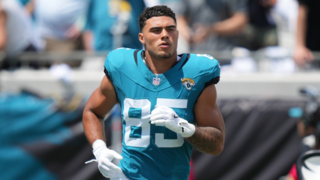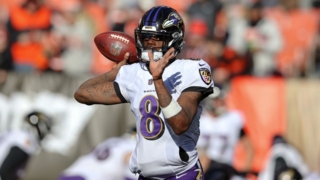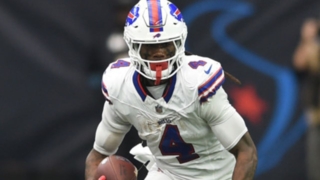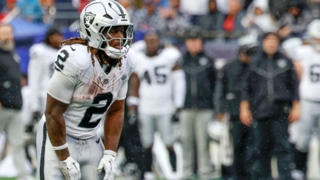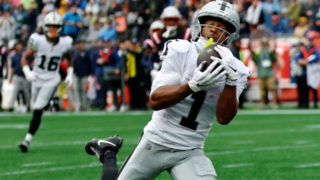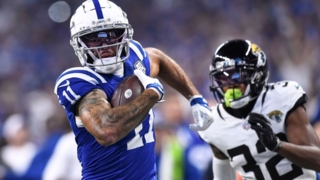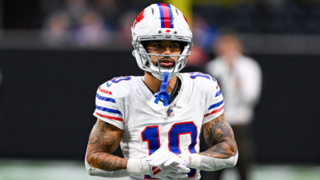Expected Fantasy Points Review: Week 4

Expect the Expected Points
“To expect the unexpected shows a thoroughly modern intellect”
-- Oscar Wilde
“If you do not expect the unexpected, you will not find it, for it is not to be reached by search or trail.”
-- Heraclitus
“Expect the unexpected baby”
-- Mike Jones
What Should You Expect?
We have heard iterations of the phrase “expect the unexpected” thousands of times.
But in this series, we will be doing the opposite. We are going to expect the expected by leveraging expected-point modeling tools.
Expected-points models (x-P) quantify the expected value of plays based on down, distance, field position, and game situation.
They calculate how many points a player is likely to score on each play and compare it to historical outcomes in similar situations.
For example, a pass on third-and-10 from the opponent’s 20-yard line has a different expected-point value than a first-and-goal run from the 5-yard line.
An x-P model assigns these values to determine how efficient players are in turning opportunities into points.
There are several great x-P models out there. For this series, I will use Pro Football Focus' expected-points model.
I will highlight some outlier players at RB, WR, and TE and then break down some potential actions to take on these players.
How to Use It in Fantasy:
- Identify Efficiency: Use x-P to evaluate which players outperform their opportunities (scoring above their x-P) or underperform (scoring below). Players consistently outperforming x-P may have elite efficiency, while those underperforming could signal a potential bounce-back or inefficiency.
- Spot Opportunity: x-P helps highlight players getting high-value opportunities (e.g. red-zone touches, end-zone targets) even if their actual fantasy points lag behind. This can signal potential breakout candidates or buy-low trade targets.
- DFS Options: A player’s values are often tied to production and projection. The market can misprice a player’s true potential, especially in small slates.
The quickest way to analyze data is to throw it into a graph.
The graph below shows the expected points per game (Y-axis) vs the actual points per game (X-axis), with a red line in the middle showing a perfectly balanced player.
Players above the red line have underperformed versus expectations. The players below the line have overperformed versus expectations.
Expecting the Expected: Running Backs

Under-Performing Running Backs
Josh Jacobs, Packers

The Week 4 edition of trade targets already rated Jacobs a buy. One of the main points was that he was underperforming in TDs and receptions, and the data backs this up.
Jacobs should have 2.3 rushing touchdowns on the season based on his work. He is sitting at 0. He is a great regression candidate, so buy low as Love returns.
Najee Harris, Steelers

It's a similar story for Harris.
He's underperforming vs. expectation in terms of receptions (7 actual vs. 8 expected), receiving yards (30 actual vs. 54 expected), and touchdowns (0 actual vs. ~1 expected).
That makes him another candidate for regression -- who is even cheaper than Jacobs. But we have more questions about that offense and Harris' skill level.
Over-Performing Running Backs
James Cook, Bills

Cook has averaged almost +6 points per game over expected in the first three weeks of the season, almost exclusively due to extra rushing and receiving TDs.
We labeled him a hold, though, because we like his offense and opportunity.
Just don’t expect him to maintain his TD pace and high-level weekly RB finishes. We project him to be a low-end RB1 to high RB2 rather than the top-6 RB he is right now.
Alexander Mattison, Raiders

Mattison got picked up in many leagues after a “strong” finish in Week 1. But his expected points paint a very different picture than his actual points scored.
He is currently RB38 in x-PPG and RB 28 in PPG, averaging 4.4 half-PPR points over expectation per game.
Like others, this primarily comes from good luck on TDs.
The Raiders backfield is a disgusting mess, and you should not target Mattison.
Expecting the Expected: Wide Receivers

Under-Performing Wide Receivers
Diontae Johnson, Panthers

Carolina benched Bryce Young, and Andy Dalton helped propel Johnson to a WR6 finish on the week, with 26.2 PPR points.
Guess what? That was still under expectation by 3.2 points based on his utilization.
There remains meat on the bone for Johnson ... as long as Young stays on the bench.
Tee Higgins, Bengals

We finally got to see Higgins on the field in Week 3. And, of course, he disappointed.
However, he had the third-biggest discrepancy between actual and expected points, 7.7 points below expectation.
Cincinnati used Higgins like a top-24 WR. He and Joe Burrow just missed key opportunities.
If he avoids further injury, Higgins should be better in the coming weeks.
Over Performing Wide Receivers
Jauan Jennings, 49ers

Jennings had the largest difference between actual points and expected points -- +23.9 -- that I can remember. He aggressively over-performed expectations and usage in Week 3.
I would not bank on more of that going forward.
But he did look good. It was fun to watch.
Alec Pierce, Colts

Death, taxes, and Alec Pierce performing over expectation.
Pierce has significantly more catches, yards, and TDs than he should.
I would not bet on him maintaining his fantasy finishes.
Expecting the Expected: Tight Ends

Under-Performing Tight Ends
All of them. Life is pain. I don’t want to talk about it.
Over-Performing Tight Ends
Dallas Goedert, Eagles

Goedert had more than 75 yards over expectation in just Week 3.
He had a 61-yard catch that was maybe the slowest run in history. He will not finish as the TE1 on the season.
But he is a TE with a pulse; I am not sure you can sell that unless you have depth.
George Kittle, 49ers

Kittle is performing slightly over expectation regarding TDs, catches, and yards.
I do not think he is a sell. It is just a little interesting and worth monitoring.
Draft using the best dynamic tool in the industry. Our fantasy player valuations (3D Values) change during your draft in response to...
- Exact league settings - direct sync
- Opponent and Team Needs
- Positional scarcity & available players
- Ceiling, injury risk, ADP, and more!
You need a dynamic cheat sheet that easily live-syncs with your draft board and adapts throughout your draft using 17 crucial indicators.
Get your Draft War Room Today
 Redraft
Redraft Dynasty
Dynasty Best Ball
Best Ball





